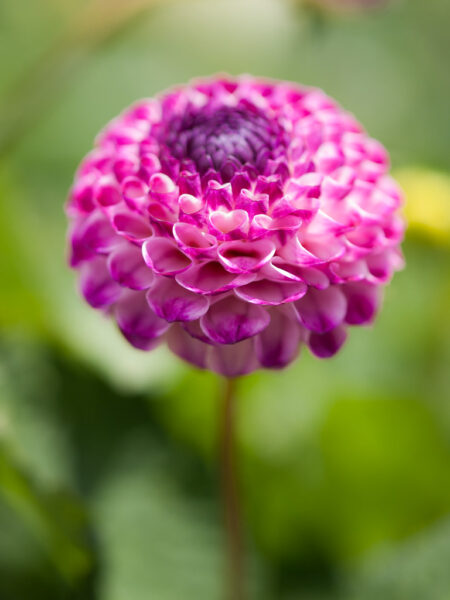
If there is a flower that truly celebrates the vibrant spirit of summer, it's the dahlia. Known for their staggering array of shapes and hues, dahlias bloom all summer long, offering a stunning show from the moment they burst into flower to when the first frosts signal a temporary farewell. Whether growing dahlias in pots or garden beds, these radiant blooms can bring joy and color to any landscape.

The charm of dahlias lies in their ability to bloom prolifically from mid-summer, typically beginning in July, and continuing their floral display until the arrival of the first hard frost in fall. This extensive blooming period makes dahlias a favorite among gardeners looking to enjoy continuous color throughout the warmer months. You can even find dahlias blooming in August through mid-October in certain locations, such as at the Oregon State Parks.
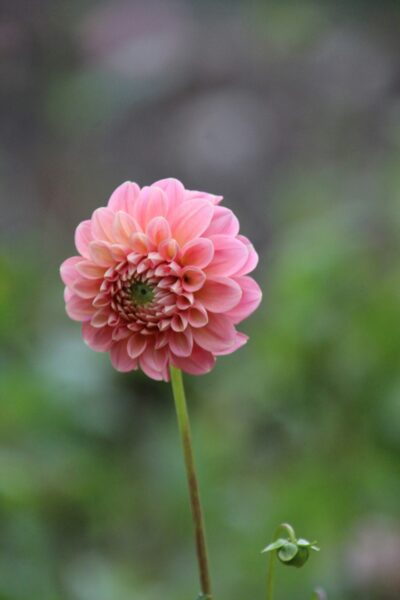
Dahlias require some maintenance to perform their best. Regular deadheading of spent blooms encourages new growth and continuous flowering. Tall dahlia varieties, often reaching heights between 4 to 6 feet, benefit from support like stakes or tomato cages to prevent them from collapsing under their own weight.
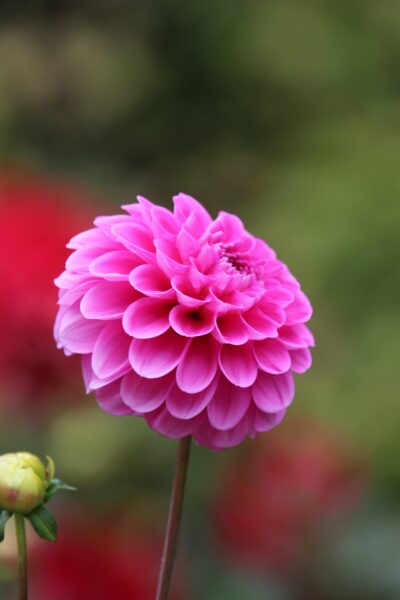
Questions such as "Do dahlias come back every year?" and "Can you leave dahlias in the ground over winter?" are common among new dahlia growers. In USDA zones 8-10, dahlias can often be left in the ground to overwinter. However, in colder climates, it is advisable to dig up the tubers and store them in a cool, dry place to prevent frost damage.
Dahlias come in a diverse range of sizes and colors, with flower heads that can measure from 2 inches to a foot in diameter. Notably, *Swan Island Dahlias* offers an extensive catalog of dahlia varieties, providing inspiration and options for gardeners looking to diversify their floral collections.
| Action | Description |
|---|---|
| Planting Tubers | Plant 4-5 inches deep, eye side up, and spaced 1.5-2 feet apart. |
| Supporting Tall Plants | Use stakes or cages to prevent tall plants from toppling. Consider using planting tools like the K-Brands Auger Drill Bit to easily prepare holes for planting dahlias. |
| Pest Management | Monitor for pests like slugs and manage with natural repellents. |
| Watering Regimen | Begin watering after sprouting; ensure deep watering in dry spells. |
| Fertilization | Apply low-nitrogen fertilizer every few weeks after sprouting. |
Enhancing dahlia blooms isn't limited to just planting timelines and care routines. Engaging with early planting techniques such as starting tubers indoors for earlier blooms or using rooted cuttings can result in a more extended flowering season. Such methods are especially beneficial for rare or delicate varieties.
Dahlias, with their vibrant and diverse shapes, are not only a favorite for garden displays but also hold a special place in cut flower arrangements. Their relatively short vase life of 3-7 days makes them cherished while fresh. With the right care and attention to details like local climate adaptations, sunlight, and soil conditions, these stunning flowers can adorn gardens all summer long and into the early autumn, offering a remarkable display that captures the essence of summer perfectly.
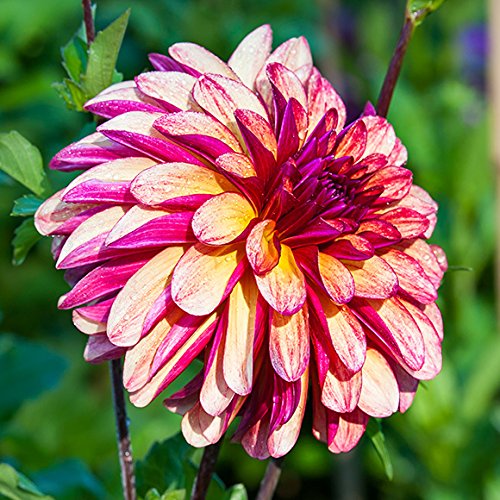
For Dahlia enthusiasts, the 'Gitts Crazy Dinner Plate Dahlia' is a summer blooming marvel. With petals that dance in a mesmerizing blend of vibrant hues, this particular variety showcases vivid pink streaks edged with creamy yellows, creating a sunset spectacle right in your garden. Ideal for those craving a splash of drama, these blooms can reach an impressive diameter up to 10 inches. The remarkable size lends them a luscious visual gravity, making them perfect for garden centerpieces or as statement cut flowers in bouquets. Their extended blooming period is a gift for any gardener, providing prolific color all summer long. Catch a glimpse of how these floriferous beauties can transform your landscape by exploring the product images and consider enriching your garden's palette with this captivating Dahlia variety. Embrace the splendor of 'Gitts Crazy Dinner Plate Dahlia'.
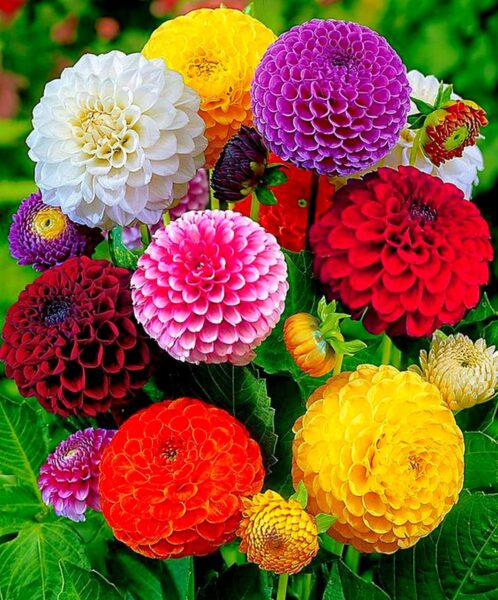
Unlock a summer-long spectacle of vibrant blooms with the Dahlia Pompon, a dazzling addition to any garden. As captured in the image, these dahlias boast perfectly rounded, pompon-like blossoms in a kaleidoscope of hues, from snowy whites to deep crimsons. Ideal for outdoor planting, these Ukrainian beauties are bound to flourish under the sun, offering a delightful burst of color that dovetails into the summer theme. Their reliable blooming pattern ensures your garden remains a focal point of natural artistry throughout the season.
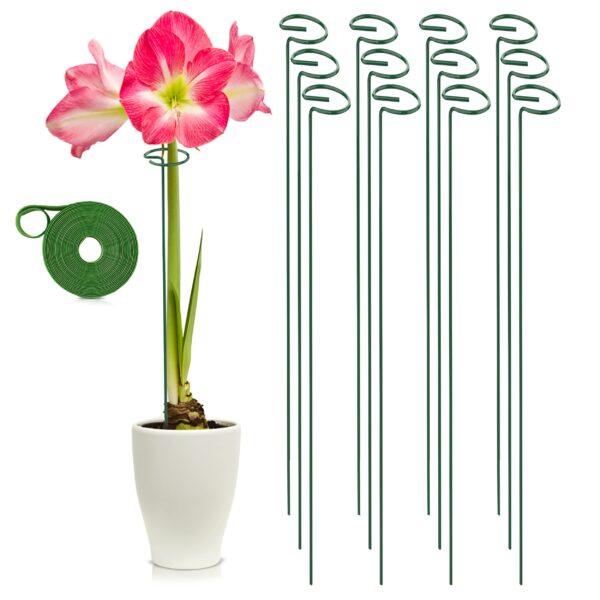
To ensure dahlias stand tall and bloom throughout the summer, sturdy support is crucial. Enter K Brands 16 Plant Support Stakes, a gardener's ally in elevating these striking flowers. The image displays robust green stakes, unobtrusive yet strong, paired with tying tape to gently secure stems. Perfect for dahlias, they blend with foliage, offering both aesthetic and functional appeal, reducing the risk of wind damage and keeping blooms visible and vibrant all season long.
As we wrap up our blooming journey through the captivating world of dahlias, we're excited to keep the conversation going! Whether you're an avid gardener or just someone who loves soaking in nature's beauty, we'd love for you to connect with us. Join our flower-loving community on Pinterest to discover a trove of gardening inspiration or follow along on Instagram for day-to-day snippets of our botanical adventures. We're also sharing our latest floral finds and tips over on X (formerly Twitter), and don't forget to check out our growing family of flower enthusiasts on Facebook. Let's keep nurturing our passion for these dazzling dahlias together, one bloom at a time!
